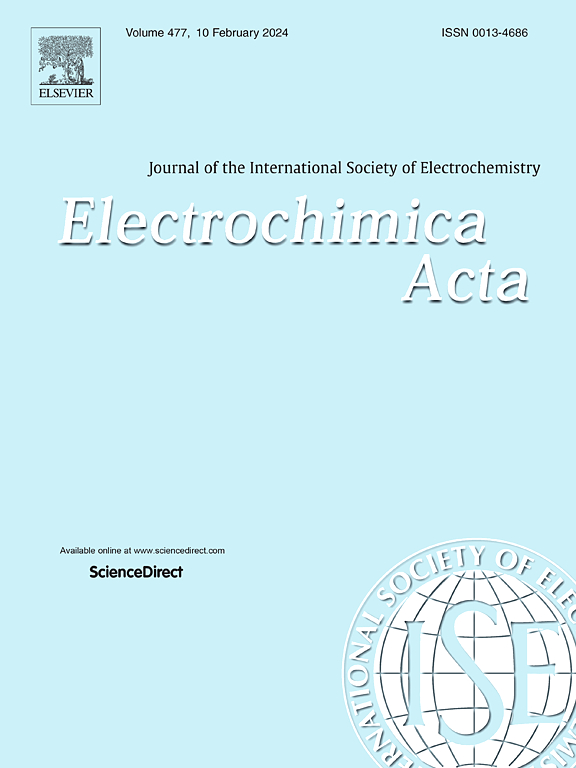A Combination Study of Electrochemical Surface-Enhanced Raman Spectroscopy and Density Functional Theory for Redox Reaction Processes of Thionine Adsorbed on a Nanostructured Gold Electrode
IF 5.5
3区 材料科学
Q1 ELECTROCHEMISTRY
引用次数: 0
Abstract
Electrochemical Surface-Enhanced Raman Spectroscopy (EC-SERS) enables the detection of in situ electrochemical redox processes at the molecular level and, in conjunction with Density Functional Theory (DFT) calculations, elucidates the chemical enhancement and adsorption configurations of molecules. This study investigates the EC-SERS of thionine on gold nanoparticles (AuNPs), revealing that the resonance Raman scattering in solid thionine originates from intramolecular electronic transitions. DFT calculations confirm that thionine preferentially adsorbs on AuNPs via the N atom of 1,4-thiazine ring. The SERS signal of thionine arises from both electromagnetic enhancement and chemical enhancement of photo-induced charge transfer between gold and the molecule. The study also provides a quantitative relationship between the Raman peak intensity of thionine and the applied potential during in-situ electrochemical reduction, as well as the adsorption kinetics of thionine onto AuNPs, which follows the Langmuir model and forms a stable self-assembled monolayer at concentrations > 10 μM. The average adsorption energy (ΔG) value for thionine adsorbed on AuNPs was found to be -5.96 kcal/mol. These findings provide molecular-scale insights into the electronic and vibrational behavior of thionine on AuNPs, offering valuable guidance for the development of advanced SERS substrates and electrochemical sensors.纳米结构金电极吸附硫氨酸氧化还原反应过程的电化学表面增强拉曼光谱与密度泛函结合研究
电化学表面增强拉曼光谱(EC-SERS)能够在分子水平上检测原位电化学氧化还原过程,并与密度泛函理论(DFT)计算相结合,阐明分子的化学增强和吸附结构。研究了硫氨酸在金纳米粒子(AuNPs)上的EC-SERS,揭示了固体硫氨酸的共振拉曼散射源于分子内电子跃迁。DFT计算证实,硫氨酸优先通过1,4-噻嗪环的N原子吸附在aunp上。硫氨酸的SERS信号来源于金与分子间光诱导电荷转移的电磁增强和化学增强。研究还提供了原位电化学还原过程中硫氨酸的拉曼峰强度与应用电位之间的定量关系,以及硫氨酸在AuNPs上的吸附动力学,符合Langmuir模型,并在浓度为>时形成稳定的自组装单层;10μM。硫氨酸吸附在AuNPs上的平均吸附能(ΔG)为-5.96 kcal/mol。这些发现为深入了解硫氨酸在aunp上的电子和振动行为提供了分子尺度的见解,为开发先进的SERS衬底和电化学传感器提供了有价值的指导。
本文章由计算机程序翻译,如有差异,请以英文原文为准。
求助全文
约1分钟内获得全文
求助全文
来源期刊

Electrochimica Acta
工程技术-电化学
CiteScore
11.30
自引率
6.10%
发文量
1634
审稿时长
41 days
期刊介绍:
Electrochimica Acta is an international journal. It is intended for the publication of both original work and reviews in the field of electrochemistry. Electrochemistry should be interpreted to mean any of the research fields covered by the Divisions of the International Society of Electrochemistry listed below, as well as emerging scientific domains covered by ISE New Topics Committee.
 求助内容:
求助内容: 应助结果提醒方式:
应助结果提醒方式:


